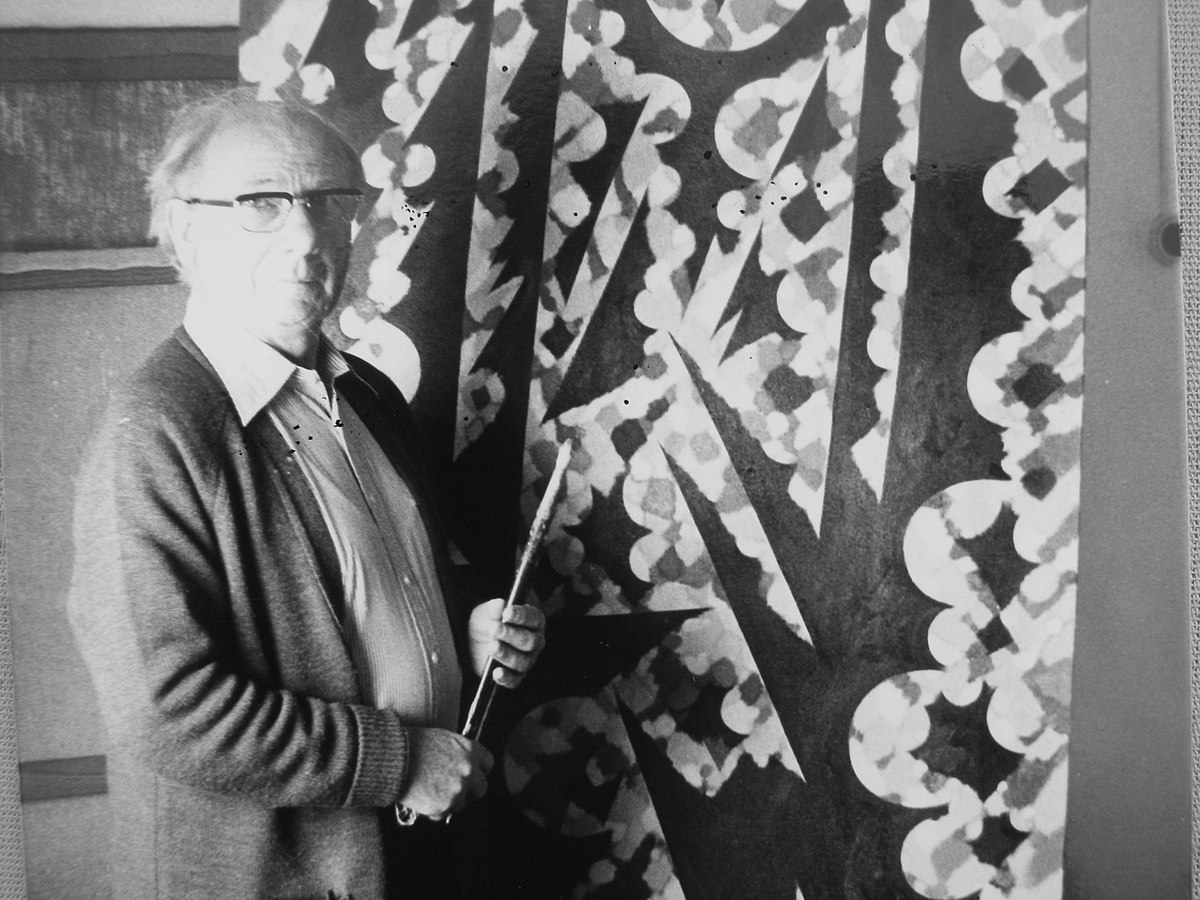William Gear, an abstract Scottish painter, was born in 1915 in Methil, Fife, Scotland, to parents Porteous Gear, a coal miner, and Janet Gear. Excelling at Buckhaven High School, he won the Dux Arts Medal in 1932. Gear studied at Edinburgh College of Art from 1932 to 1936, alongside notable peers like Wilhelmina Barns-Graham and Margaret Mellis. He furthered his studies in art history with Professor David Talbot Rice at the University of Edinburgh in 1936-37. Gear’s early career took off with exhibitions at the Royal Scottish Academy and Society of Scottish Artists in 1934.
A travel scholarship in 1937-38 took Gear through Europe, including a significant period in Paris under Fernand Léger. He also crossed paths with Robert Colquhoun and Robert MacBryde during a summer school in Arbroath in 1938. Gear briefly explored surrealism, leading to a 1939 exhibition with the New Era Group in Edinburgh.
World War II saw Gear enlisted in the military, where he served with the Royal Corps of Signals. He held his first solo exhibitions in Siena and Florence in 1944 while stationed in Italy. Post-war, he worked with the Monuments, Fine Arts and Archives department in Germany, safeguarding artwork and supporting local artists.
Between 1947 and 1950, Gear lived in Paris, mingling with influential artists like Eduardo Paolozzi, Alan Davie, and Stephen Gilbert. He also engaged with the CoBrA art collective in Amsterdam in 1949, where he met several key figures. That year, he married American Charlotte Chertok and co-exhibited with Jackson Pollock in New York. His family moved to England in 1950, settling in Loosley Row, Buckinghamshire.
Gear stirred public controversy in 1951 when his painting ‘Autumn Landscape’ won a Festival of Britain purchasing prize. That same year, he painted ‘Early Spring’ and ‘March Landscape,’ showcasing abstract organic forms in vibrant colors. After Gear’s death in 1997, his works’ value escalated. For instance, a piece auctioned at Bonhams New Bond Street in 2008 fetched $53,372 USD. Gear’s legacy was revitalized in 2015 with several exhibitions, notably at the Towner Gallery, where he had a significant impact and was dubbed ‘the painter Britain forgot.’

